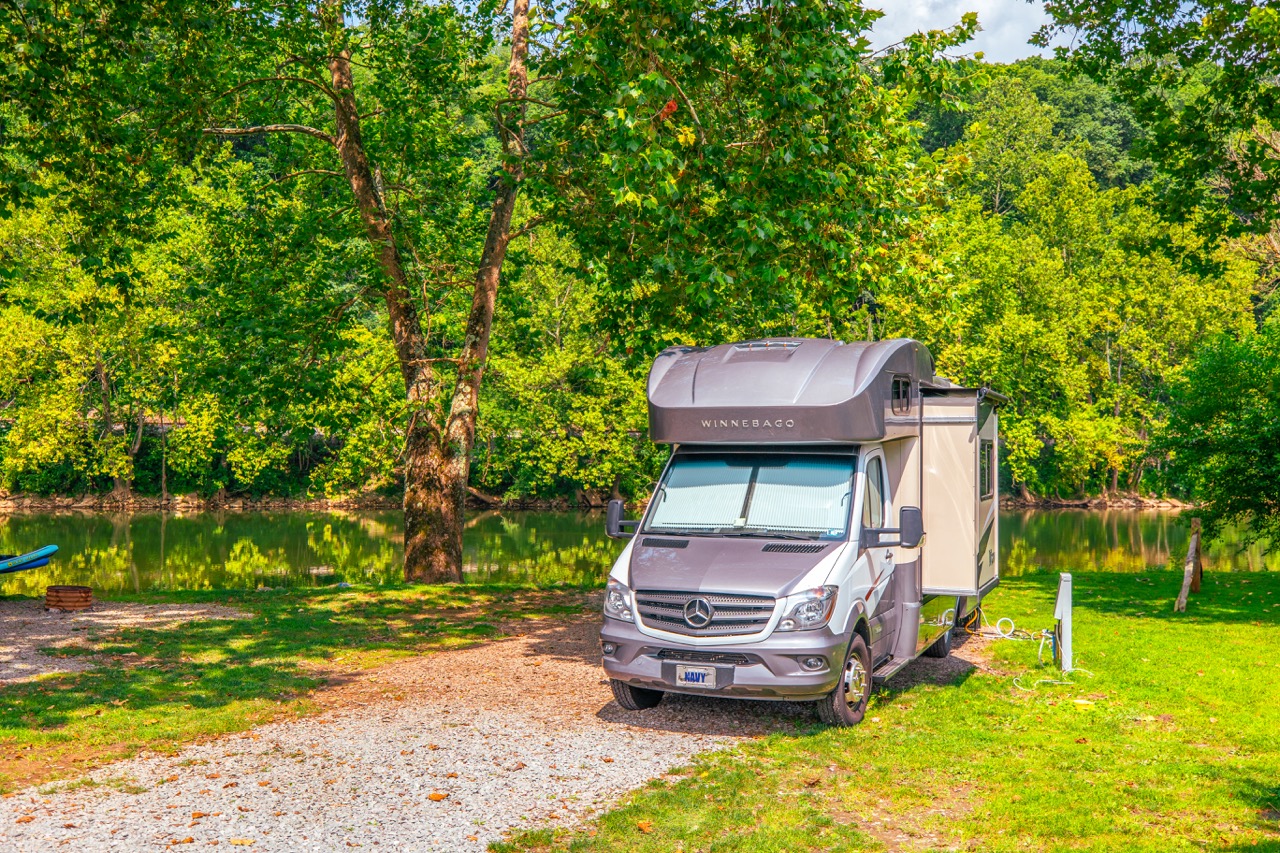
Owning an RV is a fantastic way to explore the open road and enjoy nature with the comforts of home. However, like any vehicle or home, RVs come with their own set of potential challenges.
Knowing how to troubleshoot and fix common RV issues can save you time, money, and frustration while keeping your adventures going smooth! Below are some of the most common RV problems and practical solutions for fixing them.
1. Dead RV Battery
A dead battery is one of the most common RV problems, especially if your RV has been sitting unused for a while or you’re boondocking without a reliable power source.
How to Fix It:
- Check the charge: Use a multimeter to check the voltage. A fully charged battery should read around 12.6 volts. If it’s lower, try charging it with a battery charger.
- Inspect connections: Look for corrosion or loose connections at the battery terminals. Clean them with a wire brush and tighten the connections.
- Replace the battery: If your battery no longer holds a charge, it may need replacing. Consider upgrading to a deep-cycle battery for better performance.
- Use a solar panel or generator: If you’re off-grid, solar panels or portable generators can help keep your battery charged.
2. Leaky RV Roof
A leaky roof can cause significant damage if left untreated, leading to mold, rotting wood, and water damage to your interior.
How to Fix It:
- Locate the leak: Inspect the roof for any visible cracks, tears, or gaps around vents, skylights, or seals.
- Apply sealant: For minor leaks, apply an RV roof sealant or patch tape to the affected area. Be sure to use a sealant compatible with your roof type (rubber, fiberglass, or metal).
- Reseal seams and joints: Over time, the seams along the edges of the roof can crack. Use an RV-specific caulking or sealant to reseal them.
- Regular maintenance: Inspect and clean your roof regularly to prevent leaks from occurring in the first place.
3. Clogged RV Toilet
A clogged RV toilet can quickly turn your dream trip into a nightmare, especially if you’re far from plumbing services.
How to Fix It:
- Use a toilet snake: A toilet snake or flexible plumbing auger can help break up clogs in the pipe leading to the black water tank.
- Add tank treatment: Use a black water tank treatment to break down waste and prevent future clogs. Enzyme-based treatments are effective and safe for the environment.
- Flush with lots of water: Always use plenty of water when flushing to help move waste through the system.
- Avoid non-RV toilet paper: Use only RV-friendly, biodegradable toilet paper to reduce the chances of clogging.
4. Issues with RV Water Heater
Nothing ruins a relaxing shower faster than a malfunctioning water heater. Common issues include no hot water, inconsistent heating, or strange noises.
How to Fix It:
- Check the power source: Ensure your water heater is receiving power, whether it’s electric or propane-powered. Reset any breakers or check the propane supply.
- Flush the tank: Sediment buildup can cause your water heater to malfunction. Drain and flush the tank to remove any debris.
- Check the thermostat: If the water is too hot or too cold, you may need to adjust or replace the thermostat.
- Inspect for leaks: Look for any water leaks around the tank, and replace any damaged valves or fittings.
5. RV Air Conditioning Not Cooling
When your RV’s air conditioner isn’t keeping things cool, especially in hot weather, it can make life on the road uncomfortable.
How to Fix It:
- Check the power: Make sure the air conditioner is properly connected to a power source. If it’s running but not cooling, check for tripped breakers or blown fuses.
- Clean the filters: Dirty air filters can restrict airflow and reduce cooling efficiency. Clean or replace the filters regularly.
- Inspect the condenser coils: The coils on the roof can get clogged with dirt and debris, preventing the unit from cooling properly. Clean the coils with a hose or compressed air.
- Check the refrigerant levels: If cleaning doesn’t solve the problem, you may have low refrigerant. This is usually a job for a professional, as handling refrigerant requires special equipment.
6. RV Fridge Not Cooling
A malfunctioning fridge can ruin your food and your trip, especially in warm climates. RV fridges work differently from household fridges, so the fixes are often unique.
How to Fix It:
- Level your RV: Many RV fridges need to be perfectly level to work correctly. Use a level to check your RV’s position and adjust as needed. Leveling your RV is a common practice and there are many RV levelers on the market.
- Check the ventilation: Ensure that the fridge has enough ventilation. Blocked air vents can cause the unit to overheat and stop cooling.
- Switch to propane: If your fridge is dual-powered (electric/propane), try switching to propane to see if the cooling improves.
- Inspect the seals: Check the door seals to ensure they’re tight and not allowing warm air to enter. Replace damaged seals if necessary.
- Clean the burner: For propane fridges, a dirty burner can prevent the fridge from cooling efficiently. Clean the burner and pilot light area to improve performance.
RV problems are bound to happen at some point, but with a little know-how and preparation, you can handle most issues on your own. Regular maintenance and inspections can help prevent many of these problems, ensuring that your RV stays in top shape for all your adventures.
By understanding how to troubleshoot and fix common issues like a dead battery, leaky roof, or malfunctioning appliances, you’ll spend less time worrying and more time enjoying life on the road.
Recent Comments